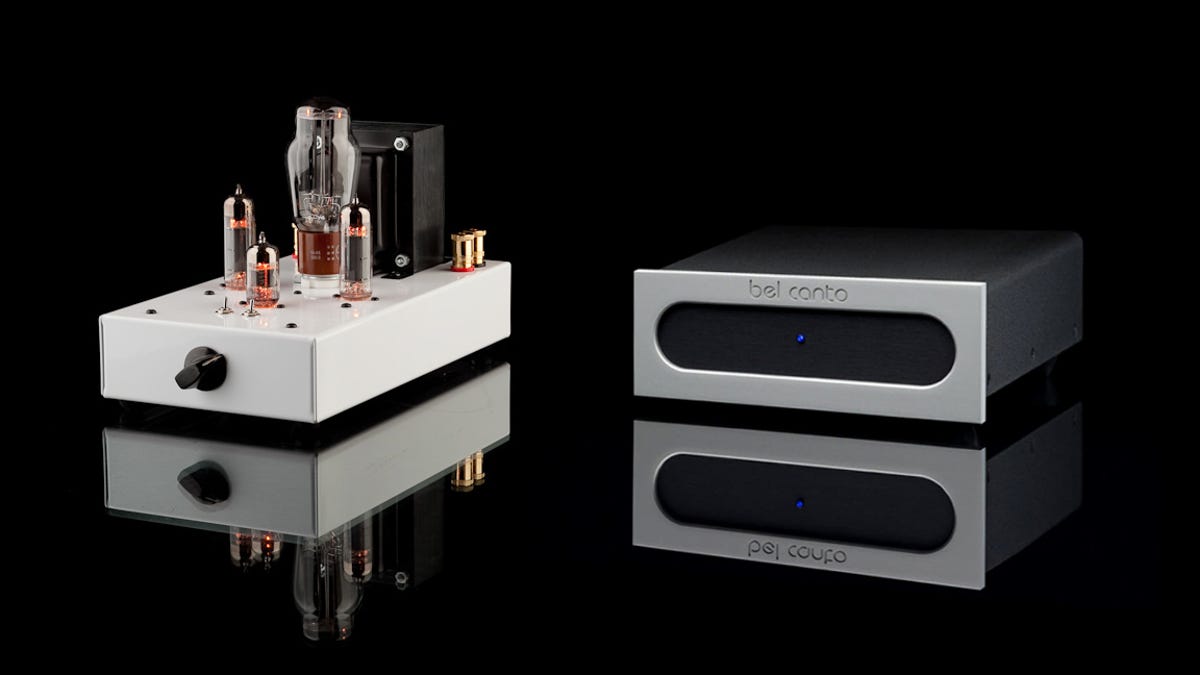Can a 2-watt amp sound better than a 200-watt amp?
2-watt versus 200-watt amplifiers, old versus new technology, tubes versus Class D--which one sounds better?

Americans love power. We buy 320-horsepower Chevy Tahoes to haul the kids to soccer practice. For home theater, the magic power number for receivers is 100 watts, and it has to be a seven-channel model, even though 80 or 90 percent of home theater buyers are perfectly happy with five-channel sound.
Americans equate power with quality, but I'm here to tell you there's another way. Sure, power is cheap, and a the-more-the-merrier strategy works well enough most of the time. Let's just be clear on what amplifier power provides: it defines the upper limit of how loud your speakers can play. So if loudness is a big priority, buy as much power as you can afford; just be aware that more watts isn't the same thing as better sound quality. I know lots of folks who never listen at high volume, have tiny rooms, or have highly efficient speakers, so they don't need a lot of power. But can a 2-watt-per-channel amp sound amazing? Yes, it can!
Meet the Decware Zen Triode SE84C+ amplifier ($775). It's designed and built in the U.S., with almost exclusively American-made parts. Designed to last almost forever, the Zen comes with a no-exceptions lifetime warranty for the original owner. Manufacturers use the word "quality" all the time, but talk is cheap; I can't think of another consumer electronics product that comes with that level of protection, at no extra cost!
The Zen breathes life into the sound of music. It communicates more of music's body and soul than any receiver I've heard. Listen to a great singer--Aretha Franklin, Jeff Buckley, John Lennon--and you feel like you're in the room with her or him. The limitations of how much volume you can squeeze out of 2 watts are obvious, but even there, 2 watts can get fairly loud. Matched with highly efficient speakers, like Decware's, 2 watts will surprise you.
Since power is an issue for so many readers I compared the Zen with my 200-watt-per-channel Bel Canto e.One REF500S stereo amp ($2,495), with my very efficient Zu Essence speakers. Both amps had the same small footprint--9x12 inches--and each weighs under 20 pounds. Sure, the REF500S played louder, a lot louder than the Zen. Bass firmed up and dynamic impact skyrocketed; high-power amps are what you need if you want to rock out. Taken down to, shall we say, a more moderate volume, the Zen/REF500S contest was something else again. The REF500S' sound was still more transparent and precise, while the Zen's sound was richer and fuller, and the soundstage more three-dimensionally present. In other words, the classic tube sound some audiophiles crave. But please don't misunderstand; while listening to the Zen the music never sounded mushy, soft, or veiled. The Zen brought out the best in acoustic music.
The REF500S sounded more powerful than the Zen, even when listening at fairly moderate volume, and dynamics and bass had more energy. Treble detailing was superior and it was nice to have the freedom to crank the volume. The Zen squashed dynamics, even at quiet volume, compared with the REF500S. But the Zen had a bigger, more spacious soundstage, and instruments and vocals on the Robert Plant-Alison Krauss "Raising Sand" CD were more three-dimensionally present with the Zen. The tubes' sweet, honeyed tone was incredibly seductive, so while I listened to the Zen I didn't miss the things that the REF500S did so well.
The REF500S exerted greater control over the speakers, and I judged its sound as more accurate overall, so harsh, processed, compressed recordings sound harsh, processed and compressed over the REF500S. The Zen made those recordings sound better by removing the edge, and the compression eased the Zen's workload. The Zen's allure wasn't strictly limited to acoustic tunes; DJ Krush's rich and melodious trip-hop masterpiece "Jaku" unleashed a huge soundstage. Beautiful-sounding Japanese instruments commingled with deep bass beats that went nice and low, and the Zen's 2 watts seemed pretty potent, as long as I kept the volume in the moderate range.
Decware makes somewhat more powerful tube amps, but they're more expensive; for this test I wanted to see how far Decware's 2 watts would take me. The amp is shipped with premium-quality 6P15P-EV output tubes that Decware claims will provide 5,000 hours of use. You can also use EL84 tubes without adjustments of any kind. The input tube is a single 6N1P, 6922, or 6DJ8, and each tube type has a different sonic signature. So you can change the sound by swapping one tube for another, for $10 or $20 a pop.
The Zen's big tube is a rectifier tube, and the amp comes with a 5U4G, for which a 5AR4 or compatible tube can be substituted. Again, swapping this tube will make audible differences in the sound and performance of the amplifier. Solid-state amps' sound is what it is; tube amps can be easily and inexpensively tuned to taste.
The REF500S, made in Minnesota, is a Class D amplifier. The "D" doesn't stand for digital; a Class D amp is a switching amp. The amp uses sophisticated Class-A analog control circuitry to achieve low distortion and high dynamic range; the REF500S will almost always (depending on the power output) draw less power from your wall socket than the Zen.
The REF500S was clearly more accurate-sounding than the Zen, and can sound wonderful with a wide variety of speakers. The Zen is more musical, but requires careful matching with highly efficient speakers. There's no clear winner here, but my goal for this review was to present an alternative view: high-power amps don't automatically trump low-power amps.
What do you think? Have you ever used a low-power amp? Share your thoughts in the Comments section.

